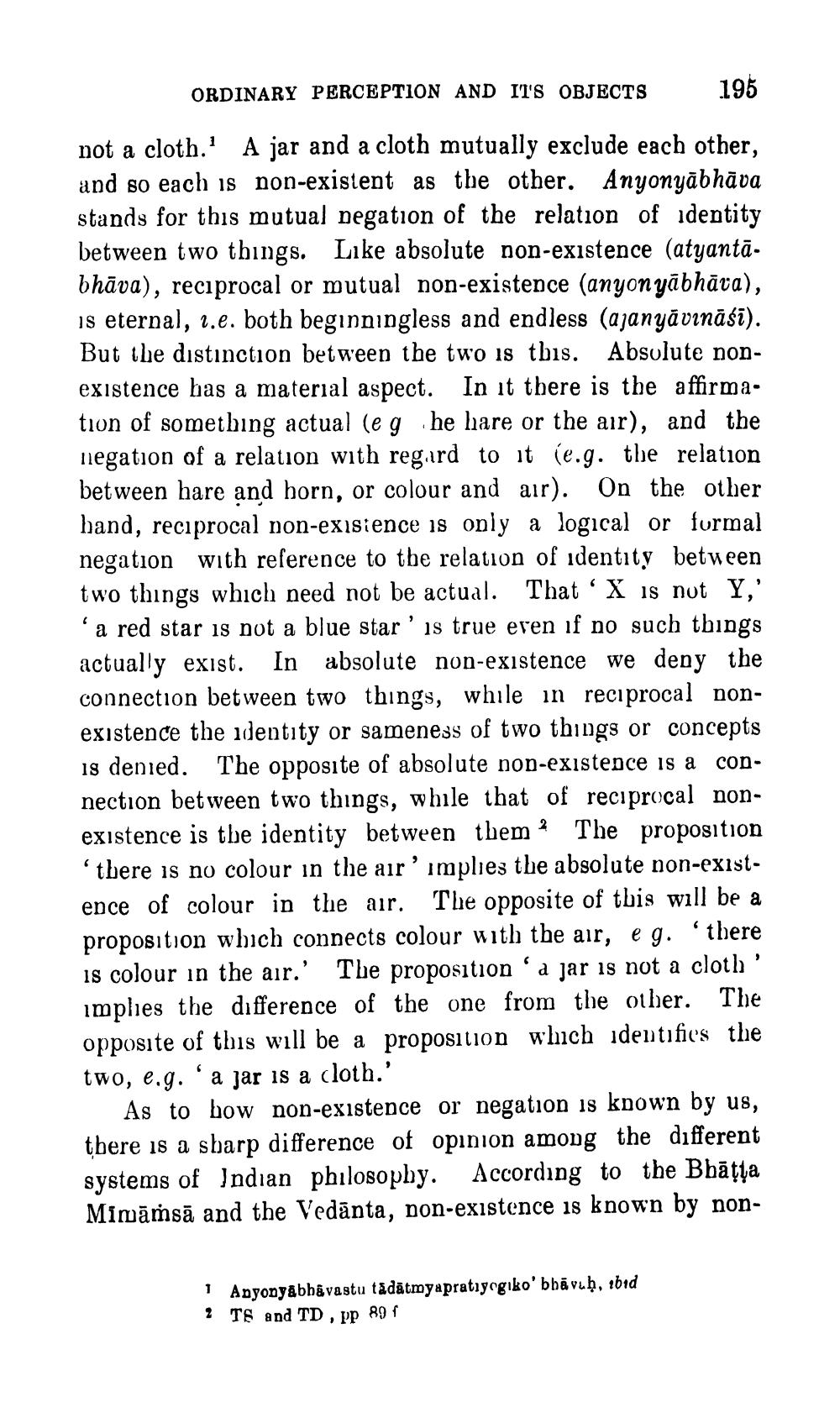________________
ORDINARY PERCEPTION AND IT'S OBJECTS
195
not a cloth. A jar and a cloth mutually exclude each other, and so each is non-existent as the other. Anyonyābhāva stands for this mutual negation of the relation of identity between two things. Like absolute non-existence (atyantā. bhāva), reciprocal or mutual non-existence (anyonyābhāva), is eternal, 2.e. both beginningless and endless (ajanyāvināśi). But the distinction between the two is tbis. Absolute nonexistence has a material aspect. In it there is the affirmation of something actual (eg he hare or the air), and the negation of a relation with regard to it (e.g. the relation between hare and horn, or colour and air). On the other hand, reciprocal non-exisience is only a logical or furmal negation with reference to the relation of identity between two things which need not be actual. That ' X is not Y,' 'a red star is not a blue star' is true eren if no such things actually exist. In absolute non-existence we deny the connection between two things, while in reciprocal nonexistence the identity or sameness of two things or concepts is denied. The opposite of absolute non-existence is a connection between two things, while that of reciprocal nonexistence is the identity between them? The proposition 'there is no colour in the air’implies the absolute non-existence of colour in the air. The opposite of this will be a proposition which connects colour with the air, eg. there is colour in the air.' The proposition'a jar is not a cloth' implies the difference of the one from the other. The opposite of this will be a proposition which identifies the two, e.g. 'a jar is a cloth.'
As to how non-existence or negation is known by us, there is a sharp difference of opinion among the different systems of Indian philosophy. According to the Bbāțţa Mimāṁsā and the Vedānta, non-existence is known by non
1 Anyonyabbâvastu tadātmyapratıyogiko' bbävuh, ibid ? Te and TD , pp 89f




